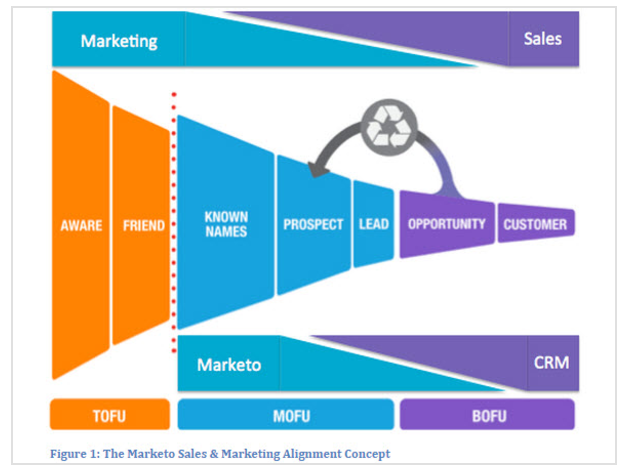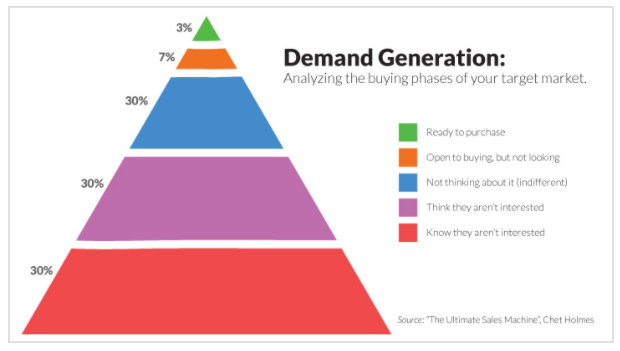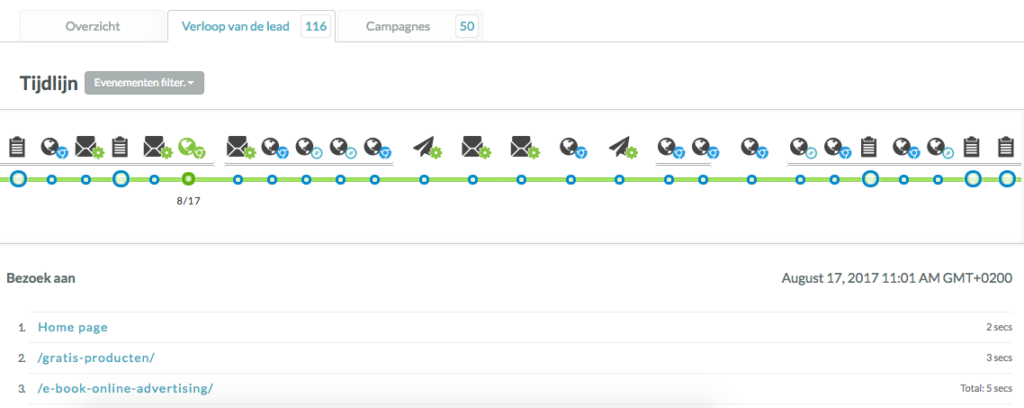One of the most important questions you ask as a B2B marketer is; how do I generate B2B leads? One way to do this is with Google Adwords. There are several strategies to collect B2B leads with Google Adwords, but in this blog we will explain 2 of them. These Adwords B2B lead generation strategies are based on the buyer's position in the buying cycle.
The 2 ways:
1. Generate revenue from leads using Google's search engine;
2. Strengthen your content marketing and generate more leads by deploying remarketing through Google Display.
To understand how to create a successful B2B Adwords campaign, you need to look at what position the potential lead is in within the buying cycle. There are two main lead types that you are going to focus on with a B2B Adwords campaign.
1. The leads that want to buy now (ready to buy leads/salesready);
2. The leads that are not yet ready to buy, but would like to in the future.
With Adwords, you can attract people who are already further along in the buying cycle. They first inquire and then contact a seller. You reach these types of leads by using keywords with high commercial intent in Adwords.
For example, if you sell marketing automation software, you could create an ad for people who search "buy marketing automation software." These people fall into the "lead" category.

With Adwords it is also possible to attract people who are in the awareness/friend stage (see diagram above). Or people who are not yet aware of your brand at all but can change this by leading them through a "lead magnet" (known names, see diagram). This is, for example, a free e-book or other download that requires people to leave their details. In this way, you use the free giveaway to collect leads.
As you can see in the diagram, the "known names" are still at the top of the funnel, and therefore not ready to buy now. This is where you need a lead nurturing method (Lead nurturing is following up and qualifying unqualified to promising leads). This will be discussed later in this blog.
Why, you may ask? Why do you want to generate leads at the top of the funnel, instead of targeting people who are already ready to buy?
I'll give you 3 good reasons:
1. Companies that excel at lead nurturing and attract leads from the upper part in the funnel get 50% more sales-ready leads for 33% less cost;
2. All your competitors go for the few percent of "ready to buy" leads. This fierce competition results in a high cost per new customer.
3. You are targeting a much larger market. In fact, about 3% are only "ready to buy." So if you target only that market, you're excluding 67% of the market you can reach through Google Display remarketing if visitors have been to your website before.
They may already be using a competitor's service and may not yet know that they are looking for marketing automation software to take their marketing to the next level. With a well-crafted lead nurturing strategy, you can ensure that these leads convert to sales.

One of the simplest ways to generate "ready to buy" B2B leads is to set up an Adwords campaign for a search network that targets keywords with high commercial intent. As we just gave as an example, an ad for people searching on "buy marketing automation software."
The easiest way to assess commercial intent is to look at the keyword's competition. If the competition is high, it is probably a good candidate for a search campaign because many competitors are already bidding on it.
Setting up ads
Once you have found an appropriate number of keywords, and classified them effectively, you can write a specific ad (one per ad group is best). Next, you're going to send them to a relevant landing page. The goal of this page is to create as many sales opportunities as possible so that it is easy for users to contact you, such as by filling out a form.
An example of part of a landing page with a strong call to action button so visitors know how to contact them:
If you generate leads through Adwords, it is important that you integrate Adwords with your CRM system. This way, you can keep track of exactly which keywords are generating the leads and ensure the signed quotes.
Many marketers work out the average number of leads needed to generate a sale. However, they do not take into account that some leads convert better than others.
If you only track leads, you only see half of the total picture. You don't see which keywords actually generated leads. As a result, you may end up putting more budget into a keyword even though that word does not generate any leads at all. You are better off investing in the words that do convert. Therefore, it is important that you not only look at the result, but also at WHAT caused that result.
By integrating your Adwords with your CRM, you see the entire customer journey. They come through an ad to a landing page where they leave their information. In a CRM system you can then see which keyword is generating the most leads and therefore what the keyword is generating. We have the customer journey of our clients very insightful in our marketing automation software. Based on this, we generate new customers all the time.

Adwords can be very effective in strengthening your content marketing and generating leads that will eventually buy. This is because Adwords allows you to promote free giveaways, such as e-books and webinars. This way, you can collect leads that are interested and therefore (most likely) will eventually buy from you.
One thing to keep in mind when using Adwords to boost your content marketing is that you should always send traffic to a landing page to download the e-book or watch a webinar. This way, you convert 20-60% of the traffic into new leads. Unlike if you only send them to a blog post where only 1-2% convert.
Before applying this strategy to your campaigns, make sure you:
- Have a good lead nurturing system so you can convert leads who have signed up for your e-book or webinar into paying customers;
- A strong collection with giveaways (lead magnets), such as e-books and demos.
If you are sure you have these 2 points, you can generate leads in 2 ways.
An effective way to promote your giveaways is through Google Search, where the leads come to a page where they leave their details and receive the e-book directly by email. At that point, the lead has become a warm lead (sales qualified lead).
A step-by-step guide on how to do this:
1. Make a list of informative keywords that match the giveaway. These are not keywords that say "buy," but keywords like "How can I improve my X."
2. Collect 5 keywords that have the highest search volume, based on these keywords create giveaways that solve these "problems" for the potential leads. For example: how do I increase sales from my existing customers? Then you can write an e-book with tips on how to increase sales from your existing ones.
3. Create very specific ads for your top 5 keywords and send the leads to the right destination pages (the landing pages where they can download the e-book).
One of the most effective methods to generate a large number of (inexpensive) leads is with remarketing. In other words, targeting people who have been to your website before. Studies have shown that remarketing yields 25% more per conversion than standard display campaigns. Returning visitors convert faster. Especially if you have multiple opt-in options on your website. Make sure you have a solution for every problem/pain point.
Triggering Traffic
If your blog has a lot of traffic, you want to know what pages they visit so you know which pages to target your remarketing on. For example, if they primarily visit marketing automation pages, you might want to set up a remarketing campaign with a giveaway about marketing automation to trigger repeat visitors.
Of course, you don't have to limit yourself to just those who have already visited your website. Of course, you can also target your giveaway to relevant people who are also interested in your giveaway. In Adwords, you have extensive targeting options.
So there are two types of leads you can best target in B2B Adwords campaigns:
1. The ready to buy leads, who are already at a later stage in the buyer cycle and are already ready to buy.
2. The leads that are even higher in the funnel, which can be led to the sale by lead nurturing.
If you want to target the ready to buy leads in search engines, you will collect sales quickly in the short term. However, this will add up in cost because of the high competition. Therefore, it is important to link them with your CRM system so you know which type of leads generate the most sales.
One of the most effective ways to generate leads that are still at the top of the funnel is with remarketing. Target users who have been to your website before through Google display. But using Google display to target "cold" leads is also an effective way to generate leads.
Do you need help generating B2B Leads?
Get in touch!
Online Marketing Consultant
